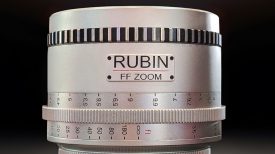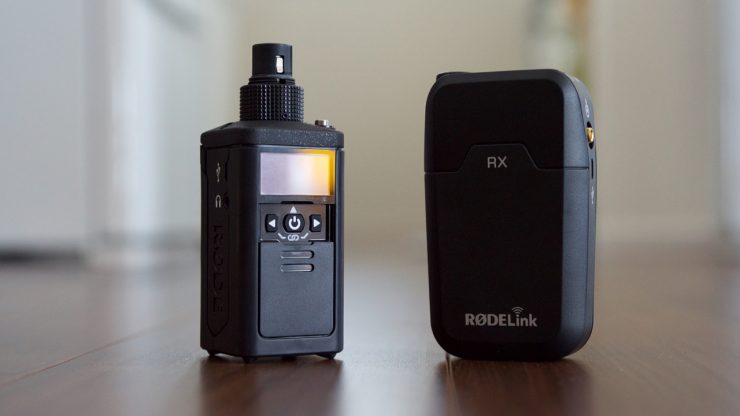
If you work in a news environment then having a wireless microphone system that that connects to a XLR handheld or a shotgun microphone that can also provide 48V phantom power is essential. These days you will often see a reporter holding a microphone, thanks to the fact that the majority of today’s news crews operating as one man bands and sound people are a rare sight. You can of course connect your microphone using a simple XLR cable, but it is often impractical to do so. A wireless system gives you far more flexibility and room to move around without having to worry about a cable.
Many broadcast news crews will be using expensive slot in radio mic receiver systems from the likes of Lectrosonics, Wisycom and Sennheiser, but for freelancers, smaller stations and people not using traditional ENG cameras, there are are a lot of other wireless options to choose from. The RØDELink Newsshooter kit is the new kid on the block and aimed squarely at these users.
The Newsshooter Kit has taken along time to come to market, after being announced back in September 2015. The main components in the Newsshooter Kit are the TX-XLR wireless transmitter and a RX-Cam camera-mounted wireless receiver. The kit uses a Series II 2.4GHz digital transmission system with 128-bit encryption, which is able to constantly monitor and hop between frequencies to maintain the strongest possible signal level.
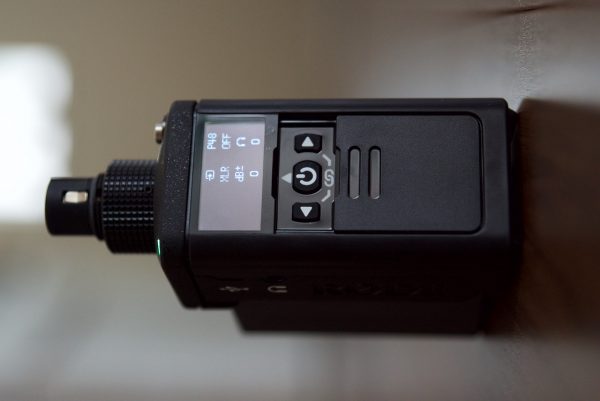
RØDE use the 2.4GHz band instead of the traditional UHF frequencies that regular pro radio mic systems work on. The big benefit for crews that travel a lot is that the 2.4GHz system can be used anywhere in the world. UHF frequencies for wireless radio microphones are different in just about every country, so for example most systems that you purchase in the US won’t be legally usable if you travel to the UK. If you do try to use mics outside of a country’s designated frequencies there is also the increased chance of interference.
Another of RØDE’s reasons for using the 2.4 GHz band is that it is less crowded than the UHF frequencies traditionally used. It is however worth noting that, while its true that the 2.4 GHz is generally less crowded than UHF when you look at numbers of wireless audio systems being used, there is a lot of other traffic using the band including wireless access points and routers. In densely populated areas the spectrum can be very crowded.
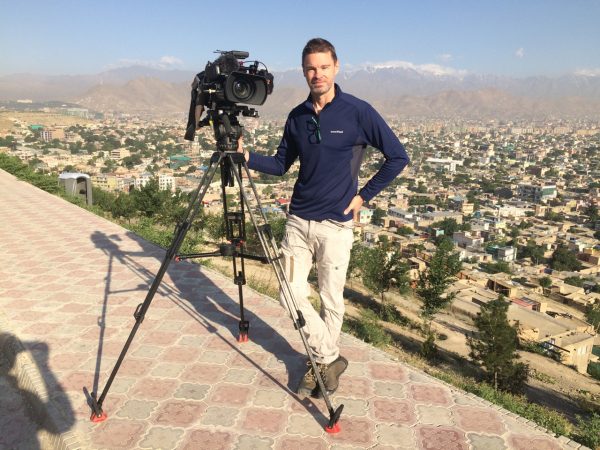
I have found in the past when using the RØDELink Filmmaker Kit that the 2.4GHz band can on occassion be problematic. It works well the majority of the time, but I have encountered situations where I was forced to use an alternative audio solution. Of course you can also experience the same problem using regular radio microphones that operate on the more traditional UHF frequencies.
The RØDELink Newsshooter Kit comes with a RX-Cam receiver, TX-XLR transmitter, a protective case with a belt clip for the TX-XLR, several spare parts and a captive TRS cable. My only complaint here is that the TRS cable doesn’t come with a XLR adapter as standard. Without a XLR adapter you can only use the RX-Cam receiver with cameras that have a 3.5mm microphone input. Given that a lot of people who buying the Newsshooter Kit will be using the system with cameras that have proper XLR inputs I would have liked to see RØDE include an adapter in the box. As it is you have to purchase one separately.
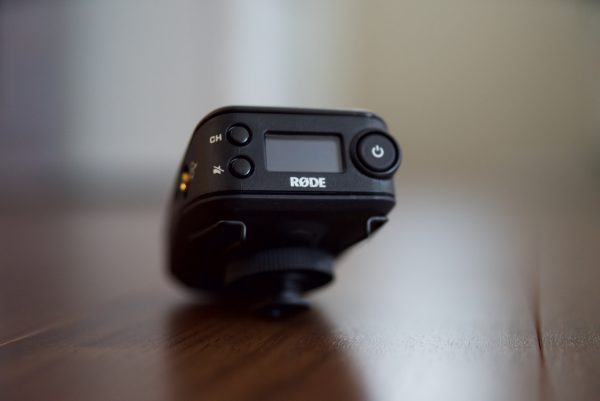
The RX-Cam receiver features an small OLED display with information on level, battery status (receiver and transmitter), mute and channel selection. The unit can be mounted on a standard camera shoe mount, 3/8″ thread or belt-clip, and if you like, the shoe mount can be located in one of two positions.
The RX-Cam receiver is actually the same as the one you will find on the standard RØDELink Filmmaker Kit. The receiver is definitely on the large side, but this is primarily because it doesn’t have any external antennas. Despite its size the unit only weighs in at 190g (6.7oz) without batteries. It does feel a little plasticky, but the unit is actually fairly robust. I have been using the original RØDELink wireless system since it first came out and it has so far survived the test of time.
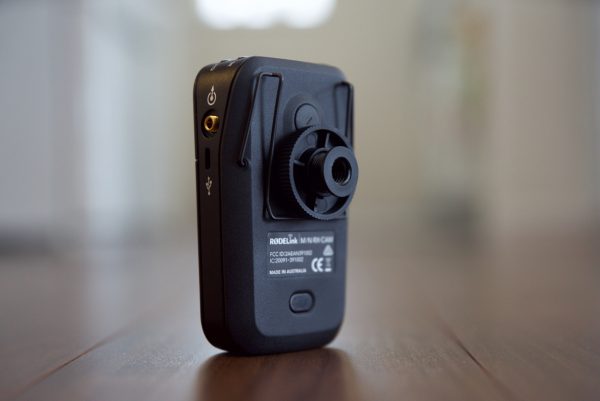
The only thing I really don’t like about the build quality of the receiver is the camera shoe mount. It is also made out of plastic and I have had two of them break in the past, forcing me to improvise by using the belt clip to mount it onto my camera strap. For some reason RØDE also thought it was a good idea to make the mount round instead of square. I wish they would change this part of the design.
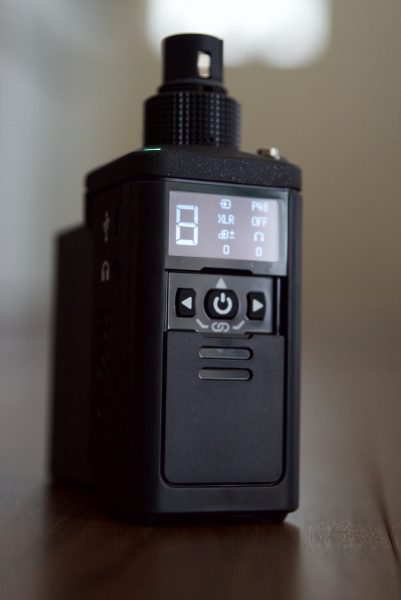
The TX-XLR transmitter connects to handheld microphones as well as shotgun microphones, and comes with a 3.5mm TRS Locking Jack Socket input and a headphone output. The transmitter has a nice slide down cover that then shows the display screen where you can make changes. Once you have made your changes you simply slide the cover back to provide protection to the screen.
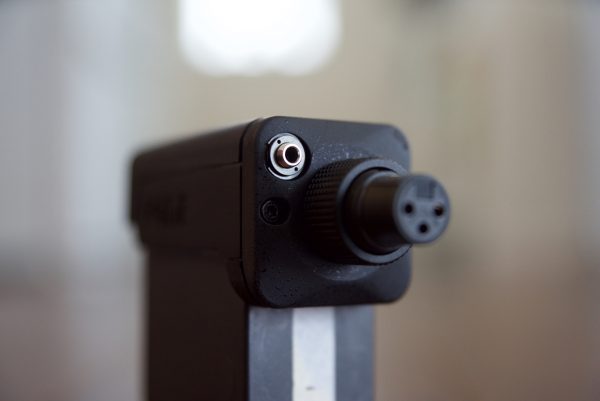
One of the cleverest things about the Newsshooter kit is that the TX-XLR transmitter also offers the ability to use any RØDE mic or third party microphone that has a TRS connector, not just the XLR connection. This flexibility makes the TX-XLR a jack of all trades transmitter that can be used with handleld, shotgun, lapel, or even headset microphones. You can stick the Newsshooter transmitter in your pocket and connect a lapel mic to emulate a regular wireless setup. By buying the Newsshooter Kit you get a system that can be used in just about any shooting environment no matter what type of microphone you need to use. This is a huge plus for shooters on a budget who can’t afford to buy two different transmitters to work with different types of microphones.
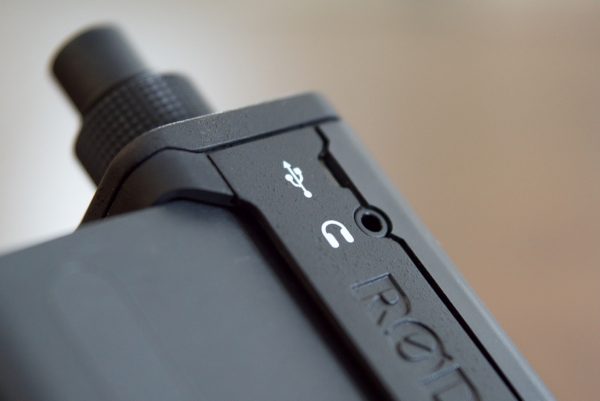
Having a headphone jack is also a nice option for video journalists who are shooting their own material. It allows you to attach earphones so you can monitor the audio to see how the recording is going to sound. This does not of course guarantee that the recording will be fine, as you are not listening to the cameras input.
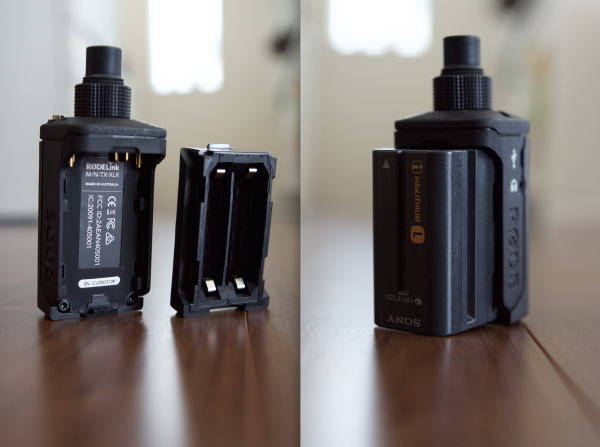
The TX-XLR can be powered in three ways, the first is using AA batteries (standard or rechargeable), the second is via a Sony NP-F series battery, and the third is via a Micro USB input. This is definitely one of the Newsshooter Kit’s biggest strengths. Having three different options lets you always have a back up powering solution if your primary one runs out. I tried the TX-XLR with a large Sony NP-F970 battery and even after a whole week the battery was still going strong.
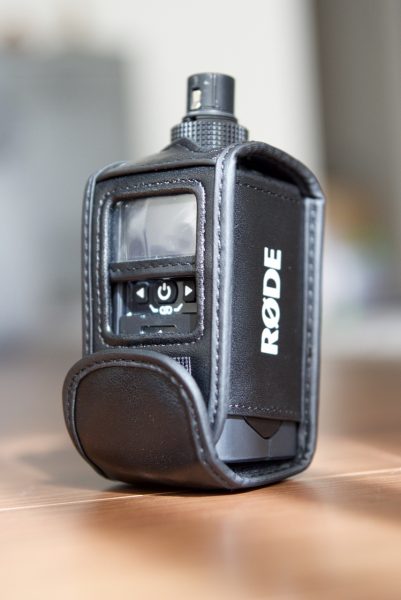
The only downside to using the TX-XLR with a Sony NP-F battery is that it won’t fit in the protective case that has a belt clip. If you want to use it with the case then you stuck using the AA battery solution.
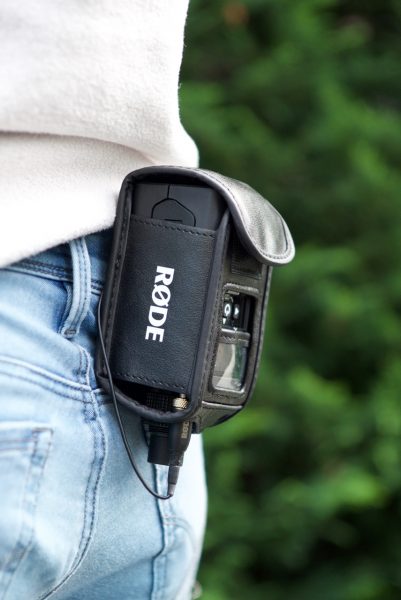
Another thing that I found quite strange about the protective case is that the belt clip faces the opposite direction to any other system I have ever used. This not only means that the unit is upside down and the menus are hard to use and see, but also that all your primary connections are facing down too. If your talent is sitting down in a interview situation I would be worried about the connectors being damaged. When I asked RØDE about this I was told that the reasons behind it being designed like this were due to ‘ergonomics and better weight distribution’.
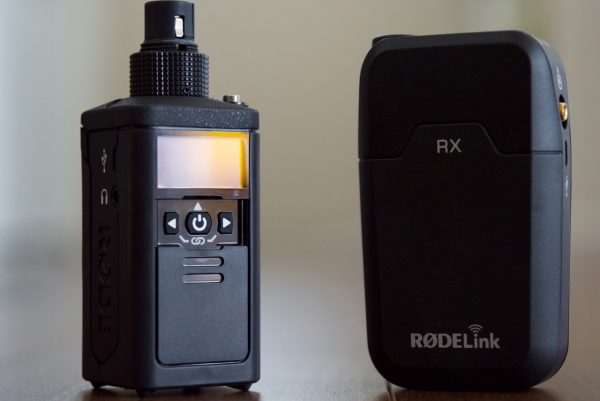
Where the TX-XLR transmitter differs from the RX-Cam receiver is build quality. The TX-XLR looks like it is far better made than the RX-Cam receiver. Everything from the latch on the battery door to the buttons and connections feels a lot more solid.
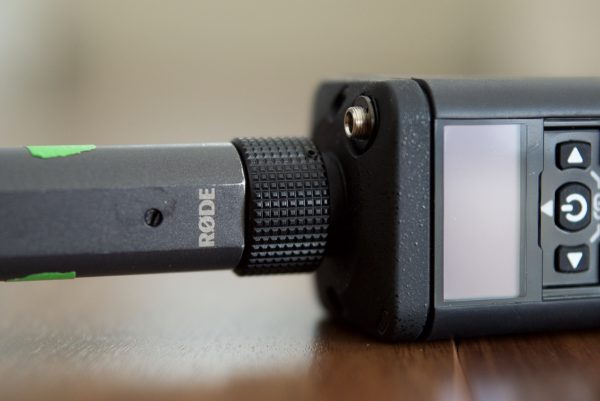
The locking collar on the XLR connector is made out of metal and when you attach a microphone you get a very solid bond – nothing wobbles around. If you didn’t know any better you would swear that the receiver and transmitter were made by two different companies.
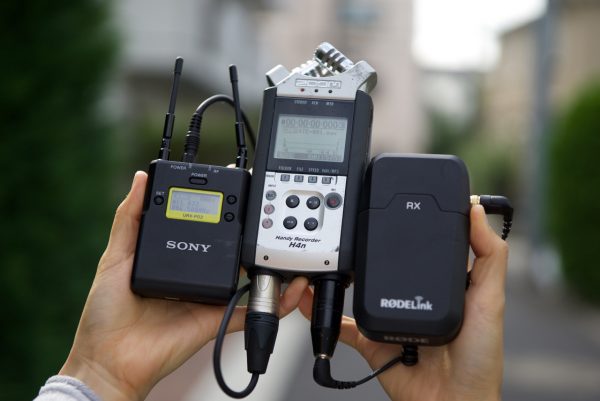
To test the operating range of the RØDELink Newsshooter Kit I thought it would be a good idea to compare it against a traditional UHF frequency radio mic that was in a similar price category. To do this I used the more expensive Sony UWP-D12 Integrated Digital Wireless Handheld Microphone ENG System. I connected a RØDE Reporter mic to the TX-XLR transmitter, the Sony mic has the wireless transmitter in built. Both the Sony and the RØDE were hooked up to a Zoom H4N and I had someone else monitor both microphones so I could find out when they started to drop out.
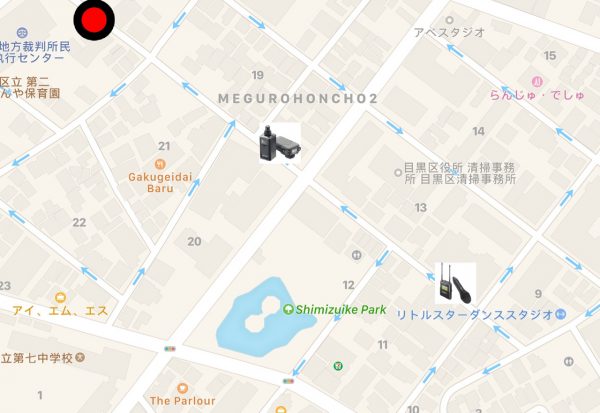
I proceeded to walk down a street while keeping both microphones in the same position so that they were always in line of sight of the receivers. Clearly this isn’t the most scientific test but the results are at least indicative of the performance you might expect, allowing of course for interference and frequency congestion in your specific location.
According to the company, the RØDELink system can maintain the strongest possible signal level at a range of up to 100 metres. My test showed that you could in fact exceed that distance. The RØDE completely cut out after 600ft (182.88 meters), while the Sony did continue to work up to a distance of 1056ft (321.86 meters). Sony does not specify the working range of the UWP-D12 Integrated Digital Wireless Handheld Microphone ENG system, but from my tests the range was very impressive.
Something else I was interested to see was if it was possible to use two RX-Cam receivers with one TX-XLR transmitter. The reason for wanting to do this is that it is always nice to be able to have two cameras receiving the same audio from one transmitter. This comes in very handy when you are shooting an interview or an event where you want the same audio being recorded to both cameras. This saves you from having to sync up the audio during your edit. Unfortunately I couldn’t get this to work. When I asked RØDE about this I was told that only one transmitter can connect with one receiver at a time, as they have a dual-way communication to coordinate channel hopping on the fly.
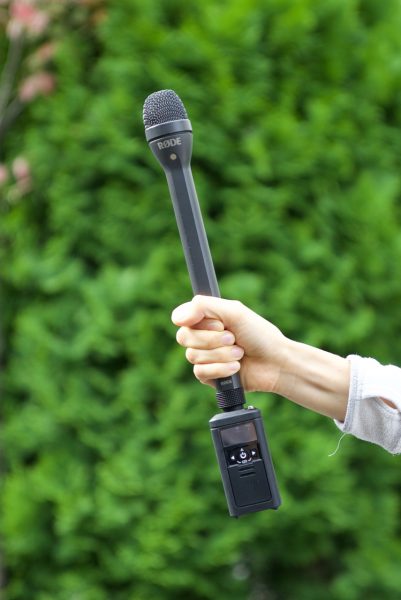
As far as the audio quality goes, it is hard for me to make a general observation. As the RØDELink Newsshooter Kit doesn’t come with a microphone, the sound quality is really going to come down to what type of mic you plan on using. In terms of the wireless performance that is again a difficult thing to test as the 2.4GHz band that the system uses will behave differently depending on the environment you are operating it in. If you already own a RØDELink Filmmaker Kit then you should in theory expect the same results and performance that you are already getting.
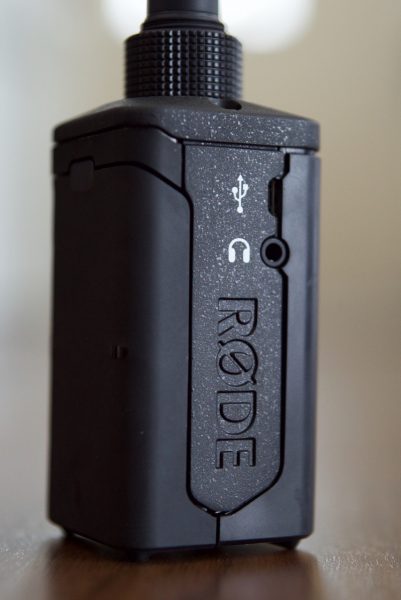
Despite the few little things that I didn’t like about the RØDELink Newsshooter Kit, I found its versatility to be its biggest strength. With so many options, both in terms of power and what type of microphone you can use with the system, it makes for a very well rounded and budget friendly option. Using the 2.4GHz band allows you to legally operate the system anywhere in the world which is a huge plus for shooters who travel a lot. The compromise seems to be that the operational range is limited when compared to some UHF frequency wireless systems, and you can’t transmit to multiple receivers.
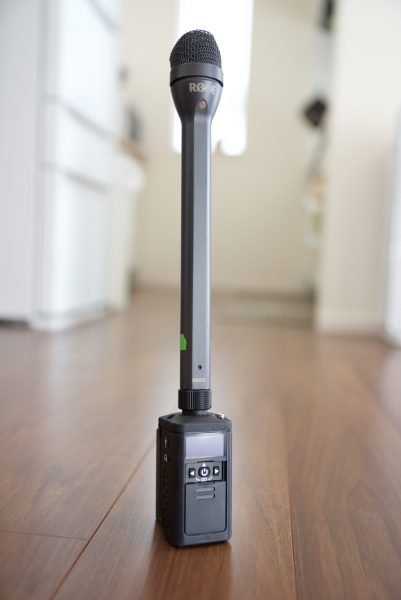
While there are other wireless radio mic systems available on the market for around the same sort of money as the RØDELink Newsshooter Kit, none of them come close to matching it for versatility. If you are on a budget and can’t afford to buy multiple wireless systems just so you can use different types of microphones, then the Newsshooter Kit is definitely worth looking at.
The RØDELink Newsshooter Kit retails for $499 US. In comparison the Sennheiser AVX Camera-Mountable Lavalier Digital Wireless Set costs around $699.95US and the older Sennheiser ew 100 ENG G3 Wireless Microphone combo system sells for $799.95US. The Sony UWP-D12 Integrated Digital Wireless Handheld Microphone ENG System costs around $599.99US.
For more information on the RØDELink Newsshooter Kit head over to RØDE.com.





